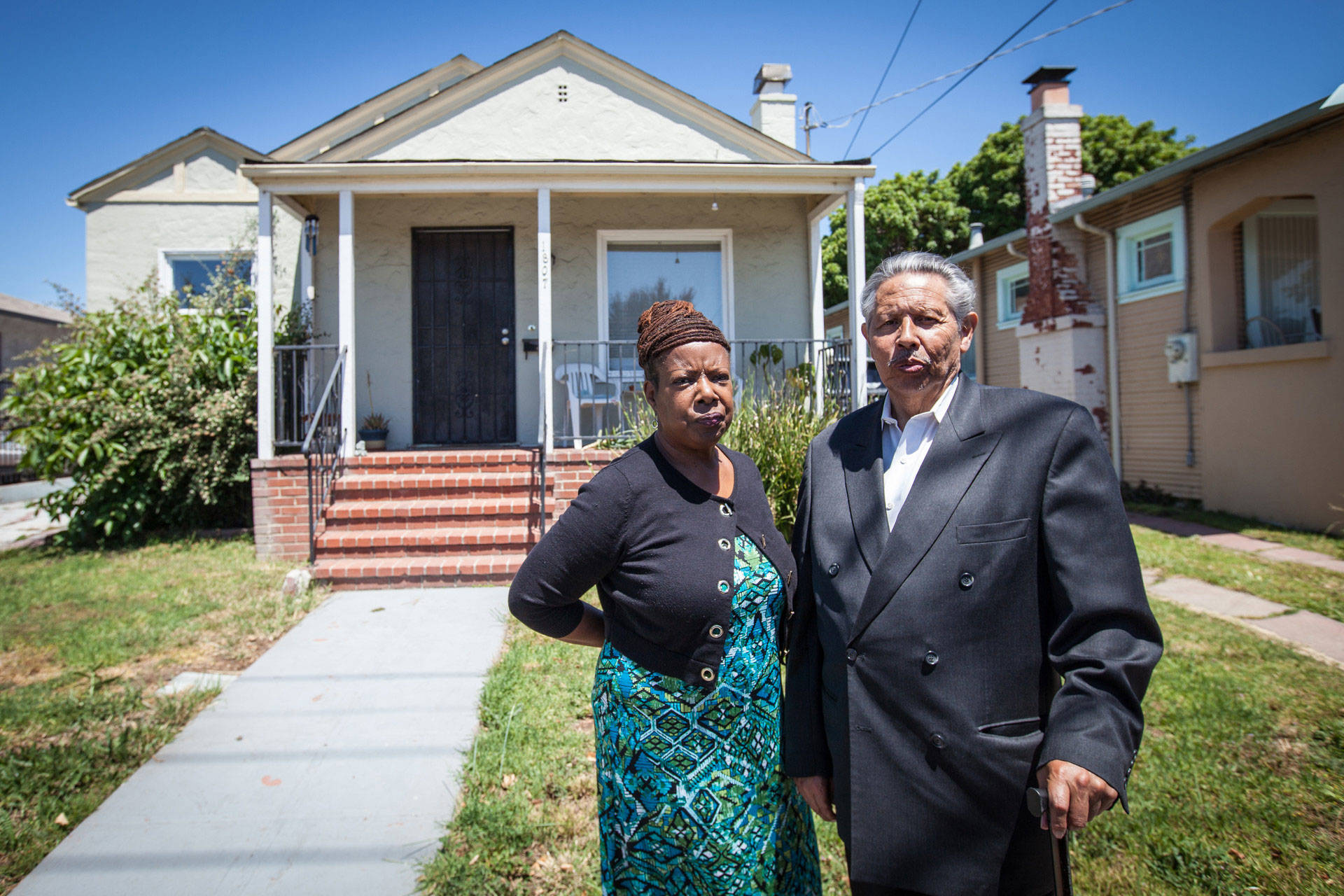 When Vanessa and Richard Bulnes got an eviction notice, it felt sadly ironic. The Bulneses were unable to pay the rent because their corporate landlord took three years to remediate high levels of lead in the backyard soil, which caused Vanessa to lose her business — a family home child care that she had run for more than 20 years.
When Vanessa and Richard Bulnes got an eviction notice, it felt sadly ironic. The Bulneses were unable to pay the rent because their corporate landlord took three years to remediate high levels of lead in the backyard soil, which caused Vanessa to lose her business — a family home child care that she had run for more than 20 years.
It was the latest in a string of injustices that happened to the Bulnes family: first, loan modification fraud, then foreclosure, now the threat of eviction. Their story is emblematic of a bigger problem: the disproportionate loss of African-American and Latino wealth during the foreclosure crisis and the obstacles to build up that wealth again. Between 2007 and 2013, so many African-American and Latino homeowners in Oakland were wiped out by foreclosure that entire neighborhoods were transformed. Many of the homes that were lost ended up in the hands of corporate investors, who then rented them out, sometimes to the same families who had lost their own homes. And that put those families, like the Bulneses, at risk of much more loss.
…
Losing a home often begins this way: A family hits a hard spot, a health crisis or a loss of income. At the time of the stroke, Richard was working at Meals on Wheels. The family lost about $2,000 a month in income, about the same amount as their mortgage payment at the time, which had ballooned after they refinanced. They still had Vanessa’s income from her child care business, but they decided their best option was to try to modify their loan.
The Bulneses, though, were caught up in a bigger web. Oakland and other cities across the country are now suing big banks for targeting African-American and Latino homeowners with loans that had abusive rates. At the same time, many banks weren’t playing fair to help homeowners modify their loans.
“It seemed like at every point, when we got to where we thought we were going to get a modification, they needed another piece of paperwork, they needed another bank statement,” said Vanessa, who is 58. “There was always something else they needed, and when we gave them that, ‘Oh we lost that, could you send something else?’ ”
What Vanessa describes sounds really familiar to Maeve Elise Brown, director of the statewide organization Housing and Economic Rights Advocates. In 2009, President Barack Obama had introduced the Home Affordable Modification Program to help struggling homeowners modify their loans, but homeowner advocates, researchers and news organizations like ProPublica found that banks often broke the rules.
“Mortgage servicers were telling people to turn in paperwork over and over and over again. They weren’t looking at it, they would shred it. They would deny people instantly,” Brown said. “Not everyone qualified, but a whole bunch of people could, but were prevented from accessing that relief by the mortgage servicing companies.”
Latino and African-American neighborhoods, like the Bulneses, were hit the hardest by the foreclosure crisis. These are the same neighborhoods that were redlined decades ago, with residents denied mortgages simply because of where they lived. Across the country, African-American and Latino neighborhoods lost three to four times more homes than white neighborhoods during the recent mortgage crisis, according to Cornell University research. On the Bulnes’ six-block street alone, at least 35 properties were foreclosed between January 2006 and December 2012, according to the website PropertyRadar, which tracks foreclosures.
Read the full article here.
